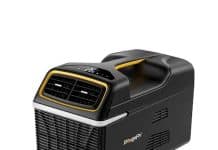To ensure a safe home all year long, you need to be aware of various parts and components of your electrical system. Do you know your whole house surge protection? What are AFCI and GFCI outlets? Know more about this by taking time to inspect your electrical system. Although most people are aware of basic electrical knowledge, there is a lot you also do not know. However, when you have a checklist you can control potential hazards and accidents. Also, you can ensure every 6 months your electrician from Nashville inspects your home to ensure your electrical system meets the safety standards. Below are things to have in your checklist to know where and what to inspect.

-
Extension cords
Do you regularly use extension cords in your home? Do you use them for more than 30 days? Extension cords should only be for temporary use and not throughout. By adding this to your checklist, you can check how your extension cords are rated for outdoor or indoor use. Check for cracks and other damages on them, and how you use them in the home. Are they nailed or stapled to the wall or ceiling? Are they hot to touch? Also, you can check if the extension cord you are using is rated to meet the power demands of the device you are using it for or it exceeds it.
-
Strange smells

One thing you can never ignore is a strange smell as you do an electrical safety checklist. The smell of a burning electrical outlet, either a device or a switch, is a sign. If your electrical device burns, the plastic components smell like a dead animal, fish, or rotten egg. Therefore, you should not ignore it if you smell something funky. It is best to check your nearby electrical components or outlets. If anything looks burned, discolored, or melted, switch off the power at your breaker box and contact your electrician immediately. In this way, you control the risk of an electrical fire.
-
GFCIs and AFCIs

When is the last time you tested your GFCI and AFCIs, is it in the last 30 days or more? Check whether all the outlets around your bathroom and kitchen have GFCI. Also, for better detection of dangerous electrical conditions. It is best to replace all the standard circuit breakers with safer AFCIs. Add this to your to-do list to know where to implement changes. Since the GFCIs should be in kitchens, bathrooms, garages, and basements. While the AFCIs should be in most parts of the house. However, consult with your electrician depending on the state you are in, to confirm if your home electrical system is up to code.
-
Electrical panel

The electrical panel should also be a part of your checklist. Confirm if it has a label of the last service done. Check that your circuit breaker is working efficiently. Does it trip often? Are the switches working as they should? Do you have your circuit breakers labeled well, and do you know how the breakers connect to what outlet, circuit, or room in your home? Finally, do you have the right amperage rating?
-
Electrical appliances

This is a wide area to check and exhaust as part of your home electrical safety. You can start with your oven and check when you last cleaned the exhaust area and if it’s clear of combustibles like plastics and towels. Inspect the back of your refrigerator for dust and debris and if it has enough air circulation. Test your GFCI outlets in the bathroom, kitchen, and laundry room to see they are working properly. Also, consider if you are avoiding vampire energy by unplugging appliances you are not using? Has any major appliance shocked you in the past, and do you have a schedule for your HVAC maintenance?
To sum up, take electrical safety in your home seriously. Going through your checklist will help you know what and where to inspect. The above are some of the things you can have in your checklist and you can use them as a starting point of checking for any faults, delays, repairs, and maintenance needed in different electrical stuff in the home.


